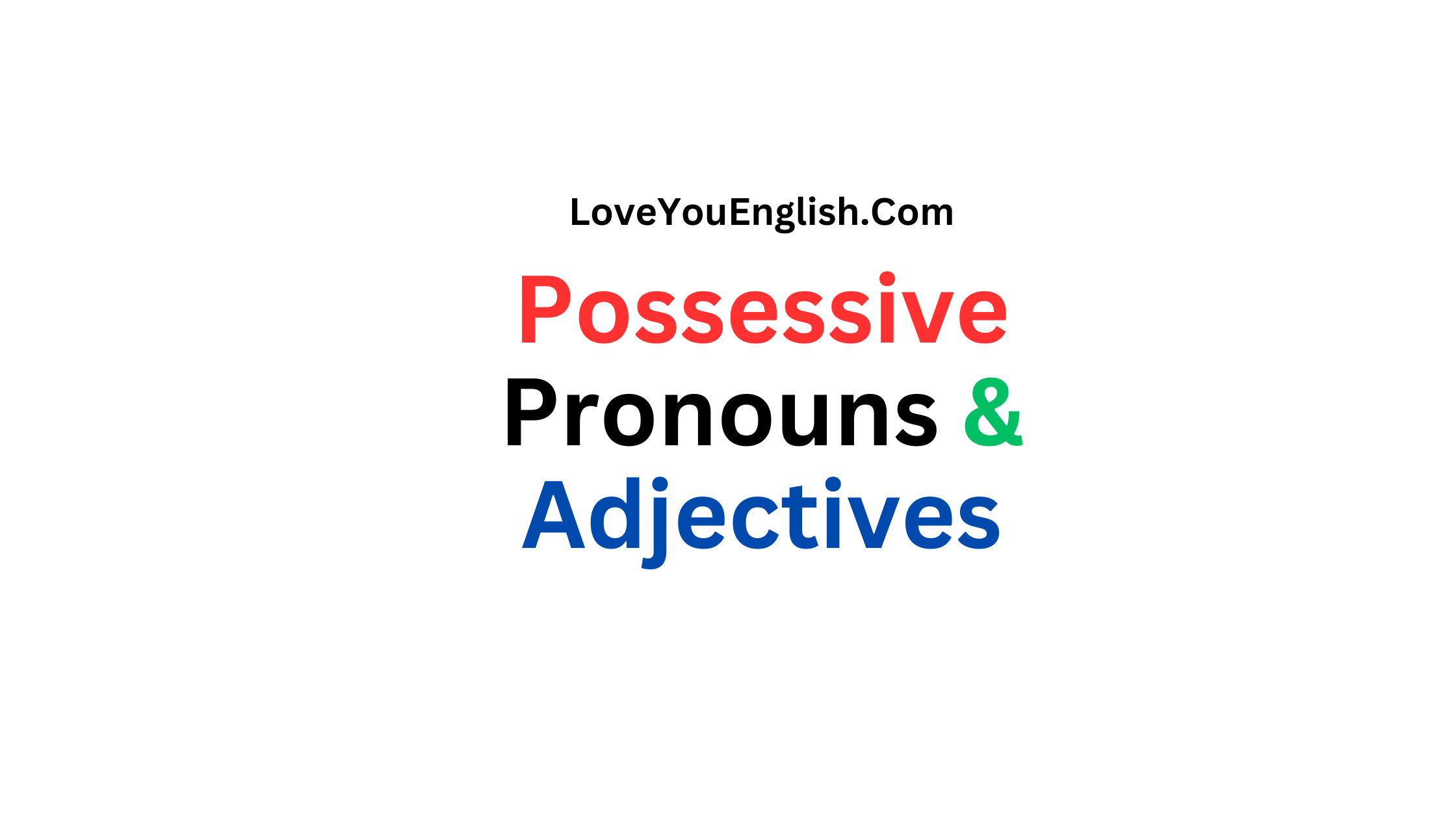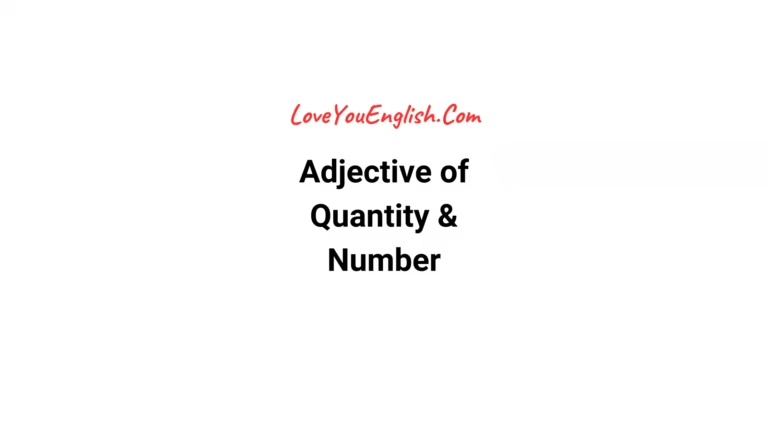A Complete Guide to Possessive Pronouns & Adjectives
Imagine you and your friend are playing with toys. You pick up a car and say, “This is my car.”
Your friend picks up a doll and says, “This is my doll.” But what if you just said, “This is mine”?
Both sentences mean the same thing! This is where possessive pronouns and adjectives come in.
They help us talk about things that belong to us. Let’s learn how to use them!
What Are Possessive Pronouns and Adjectives?
Possessive pronouns and adjectives show ownership or belonging. They help us understand who something belongs to.
Possessive Adjectives
Possessive adjectives come before a noun. They tell us who owns something.
Examples:
- This is my book.
- That is your hat.
- She loves her cat.
- He forgot his keys.
- We are going to our school.
- They have their bags.
List of Possessive Adjectives:
- My
- Your
- His
- Her
- Its
- Our
- Their
Possessive Pronouns
Possessive pronouns replace a noun. They stand alone and do not need another noun after them.
Examples:
- This book is mine.
- That hat is yours.
- The cat is hers.
- The keys are his.
- The school is ours.
- The bags are theirs.
List of Possessive Pronouns:
- Mine
- Yours
- His
- Hers
- Its (rarely used)
- Ours
- Theirs
Difference Between Possessive Adjectives and Pronouns
It is easy to mix them up! Look at these sentences:
- This is my book. (my is a possessive adjective)
- This book is mine. (mine is a possessive pronoun)
Both sentences talk about the same thing, but the words are different. Possessive adjectives come before nouns, while possessive pronouns replace nouns.
More Examples:
| Possessive Adjective | Possessive Pronoun |
|---|---|
| This is my pen. | This pen is mine. |
| That is your bag. | That bag is yours. |
| This is her dress. | This dress is hers. |
| He forgot his wallet. | This wallet is his. |
| We love our house. | This house is ours. |
| They brought their car. | That car is theirs. |
How to Use Possessive Pronouns and Adjectives Correctly
Here are some easy rules to follow:
- Possessive adjectives always come before a noun. (Example: my bag, your dog, their house)
- Possessive pronouns never have a noun after them. They replace a noun. (Example: This is mine, That is yours, The book is ours)
- Do not use an apostrophe (‘) in possessive pronouns or adjectives. People often confuse its and it’s.
- Its shows ownership. (The dog wagged its tail.)
- It’s is short for it is. (It’s raining today.)
Common Mistakes to Avoid
Mistake 1: Using a Possessive Pronoun Instead of an Adjective
❌ This is mine book.
✅ This is my book.
Mistake 2: Using a Possessive Adjective Instead of a Pronoun
❌ This book is my.
✅ This book is mine.
Mistake 3: Confusing “It’s” and “Its”
❌ The cat played with it’s toy.
✅ The cat played with its toy.
Fun Activities to Practice
Activity 1: Fill in the Blanks
Fill in the blanks with the correct possessive adjective or pronoun.
- This is ___ (I) pencil.
- The red bag is ___ (she).
- We love ___ (we) school.
- That car is ___ (they).
- He forgot ___ (he) phone.
(Answers: My, Hers, Our, Theirs, His)
Activity 2: Match the Sentences
Match the possessive adjectives with their correct possessive pronouns.
- A) This is my ball. ➝ ___
- B) That is your bike. ➝ ___
- C) These are their books. ➝ ___
- D) This is our classroom. ➝ ___
(Answers: Mine, Yours, Theirs, Ours)
Activity 3: Spot the Mistake
Find the mistake in each sentence and correct it.
- That book is your’s.
- This is hers pen.
- I love mine dog.
(Answers: yours, her, my)
Conclusion
Possessive pronouns and adjectives are easy to learn! Remember:
- Possessive adjectives come before a noun. (my, your, his, her, its, our, their)
- Possessive pronouns stand alone. (mine, yours, his, hers, its, ours, theirs)
- Do not use an apostrophe in possessive pronouns or adjectives.
Practice using them in daily conversations, and soon, you will be a pro! Keep learning and have fun with English!
FAQs: Possessive Pronouns & Possessive Adjectives
1. What is the difference between possessive pronouns and possessive adjectives?
-
Possessive adjectives come before a noun (my, your, his, her, its, our, their).
Example: my book, their house -
Possessive pronouns replace the noun (mine, yours, his, hers, its*, ours, theirs).
Example: This book is mine.
*“Its” as a possessive pronoun is rare and usually avoided.
2. Can I use a noun after a possessive pronoun?
No. Possessive pronouns stand alone.
-
❌ This is mine book.
-
✅ This book is mine.
3. When do I use “its” vs. “it’s”?
-
its = possessive adjective (belongs to it)
-
it’s = it is or it has
Example: The cat licked its paw. / It’s raining.
4. Is “his” both an adjective and a pronoun?
Yes.
5. Do possessive adjectives change for singular or plural nouns?
No. They agree with the owner, not the thing owned.
Example: Her shoes (plural noun, one owner).
6. How do I choose between “my” and “mine”?
-
Use my before a noun.
-
Use mine when the noun is already clear or not mentioned.
Example: My phone is new. / That phone is mine.
7. Are possessive adjectives ever capitalized?
Only at the beginning of a sentence or in titles.
Example: My friends are here.
8. Can possessive adjectives be used with gerunds (-ing verbs)?
Yes, in formal English.
Example: I appreciate your helping me.
9. Is “whose” a possessive pronoun or adjective?
It can be both, depending on use.
10. Can I use possessive forms with animals and things?
Yes.
Example: The dog wagged its tail. / The company changed its policy.
11. What’s a common mistake learners make?
Using a possessive pronoun with a noun.
-
❌ hers book
-
✅ her book
12. Do possessive forms show gender for objects?
No. Objects use its. Gender applies to people/animals when known.
13. Can possessive adjectives be repeated in a sentence?
Yes, if clarity is needed.
Example: She took her coat and her bag.
14. Are possessive adjectives the same as apostrophe ’s?
No.
-
Possessive adjectives: my, your, his
-
Apostrophe ’s: John’s book
15. How can I practice using them correctly?
-
Replace nouns with pronouns in sentences.
-
Write short descriptions of your belongings.
-
Do fill-in-the-blank exercises.
More topics:
- Learn ALL Tenses in English: The Complete Course
- When to Use Who vs. That: A Comprehensive Guide
- Relative Pronouns: Where, In Which, and Wherein
- Learn English Through Media: Fun and Effective Methods







